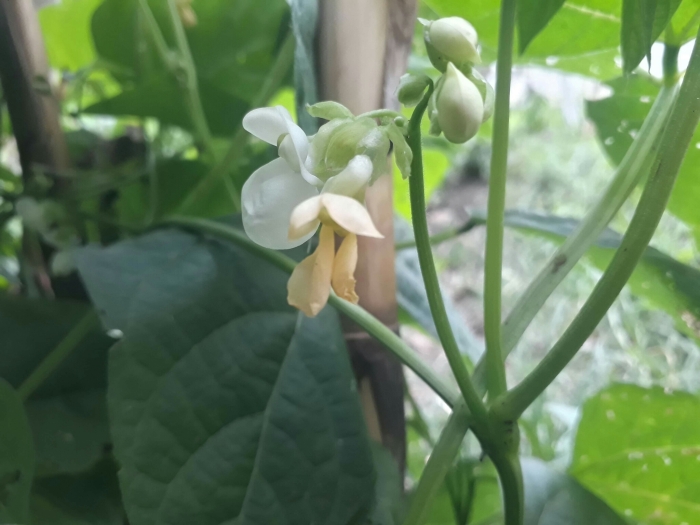Common Bean
(Phaseolus vulgaris)
Common Bean (Phaseolus vulgaris)
/
/

© Saban-Sequén, E.A.
CC BY 4.0
Image By:
© Saban-Sequén, E.A.
Recorded By:
Copyright:
CC BY 4.0
Copyright Notice:
Photo by: © Saban-Sequén, E.A. | License Type: CC BY 4.0 | License URL: http://creativecommons.org/licenses/by/4.0/ | Uploader: saban-sequen | Publisher: iNaturalist |

























Estimated Native Range
Summary
Phaseolus vulgaris, commonly known as the common bean, is an herbaceous annual plant that is part of the legume family. It is native to the Americas but has been widely cultivated across diverse climates globally. The common bean thrives in a variety of habitats, including open fields, clearings, and agricultural land, where it benefits from full sun exposure. It typically grows to a height of 1-3 feet (30-90 cm) and can be either bush-like or climbing, depending on the variety.
The common bean is valued for its ability to fix nitrogen in the soil, improving soil fertility for subsequent crops. Its flowers, which can be white, pink, or purple, are generally modest in size and give way to pods that can be green, yellow, black, or purple when mature. The beans inside the pods are a significant source of protein, fiber, vitamins, and minerals, making them an essential part of the human diet. In cultivation, common beans are grown for both their edible seeds and pods, with numerous cultivars selected for different pod shapes, sizes, and colors. They are commonly used in a variety of culinary applications, including soups, stews, and salads. Beans require well-drained soil and moderate watering, with more frequent irrigation during flowering and pod development. While they are relatively easy to grow, they can be susceptible to fungal diseases and pests such as bean beetles.CC BY-SA 4.0
The common bean is valued for its ability to fix nitrogen in the soil, improving soil fertility for subsequent crops. Its flowers, which can be white, pink, or purple, are generally modest in size and give way to pods that can be green, yellow, black, or purple when mature. The beans inside the pods are a significant source of protein, fiber, vitamins, and minerals, making them an essential part of the human diet. In cultivation, common beans are grown for both their edible seeds and pods, with numerous cultivars selected for different pod shapes, sizes, and colors. They are commonly used in a variety of culinary applications, including soups, stews, and salads. Beans require well-drained soil and moderate watering, with more frequent irrigation during flowering and pod development. While they are relatively easy to grow, they can be susceptible to fungal diseases and pests such as bean beetles.CC BY-SA 4.0
Plant Description
- Plant Type: Herb, Vine
- Height: 1-7 feet
- Width: 1-2.6 feet
- Growth Rate: Rapid
- Flower Color: Purple, Yellow
- Flowering Season: Spring, Summer
- Leaf Retention:
Growth Requirements
- Sun: Full Sun
- Water: Medium
- Drainage: Medium
Common Uses
Bee Garden, Edible*Disclaimer: Easyscape's listed plant edibility is for informational use. Always verify the safety and proper identification of any plant before consumption., Low Maintenance, Potted Plant
Natural Habitat
Native to the Americas, thriving in open fields, clearings, and agricultural land
Other Names
Common Names: Common Bean, Kidney Bean, Common Haricot, Dwarf Bean, Frash Bean, Green Bean, String Bean, Snap Bean
Scientific Names: , Phaseolus vulgaris, Phaseolus aborigineus, Phaseolus aborigineus var. hondurensis, Phaseolus albus, Phaseolus angulosus, Phaseolus asparagioides, Phaseolus capensis, Phaseolus carinatus, Phaseolus carinatus var. carneus
GBIF Accepted Name: